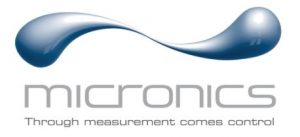Bristol Water – Water treatment works uses Micronics flowmeters to validate flows
It is a requirement of the regulator and the Environment Agency that the flow and quality of waste water from drinking water treatment plants are monitored when discharging into water courses such as rivers and streams (Consent to discharge regulations). Bristol Water has supplied drinking water for over 167 years and serves a population of 1.1 million people and all the associated businesses in an area of 2,400 square kilometres (1,000 square miles) centred on Bristol. In order to be able to monitor its flow, hundreds of flow meters are permanently installed across the business in treatment works, pumping stations and the distribution infrastructure. However, it is important to cross check them for accuracy and validate them. Furthermore, where there are no flow meters installed, modifications and improvements may need to be made. Treatment works are highly regulated and it is preferred to do a thorough check on the flows before an inspection by an independent body for certification (MCert) Finally, if it is found that repairs have to be made it is ideal if failed flow meters can be temporarily replaced to avoid loss of production and resilience of supply and enable the efficient planning of repair and replacement work.
 To avoid costly and disruptive downtime the flow meter would have to be non-invasive and easy to install without any need to break into the system. For these purposes, Alan Jones, Bristol Water’s Optimisation and Development Engineer researched flowmeters on the internet and selected a Micronics U1000 and Portaflow PF440IP portable ultrasonic, clamp-on flowmeter for use in Purton Treatment Works, the largest of 16 run by the company. Alan was pleased with his selection: “Because mechanical parts do not need to be inserted through the pipe wall or to protrude into the flow system, installation took just a few minutes and there was no need to shut down flow or drain the system, making it extremely cost effective and practical.” In addition, the use of the Micronics product allows Alan to validate existing flow measurement systems, providing data that enables improvements to be made to plant control methodologies, reducing costs, improving resilience and planning replacements.
To avoid costly and disruptive downtime the flow meter would have to be non-invasive and easy to install without any need to break into the system. For these purposes, Alan Jones, Bristol Water’s Optimisation and Development Engineer researched flowmeters on the internet and selected a Micronics U1000 and Portaflow PF440IP portable ultrasonic, clamp-on flowmeter for use in Purton Treatment Works, the largest of 16 run by the company. Alan was pleased with his selection: “Because mechanical parts do not need to be inserted through the pipe wall or to protrude into the flow system, installation took just a few minutes and there was no need to shut down flow or drain the system, making it extremely cost effective and practical.” In addition, the use of the Micronics product allows Alan to validate existing flow measurement systems, providing data that enables improvements to be made to plant control methodologies, reducing costs, improving resilience and planning replacements.
This example demonstrates that there is significant potential for replication throughout the water treatment industry.
For further information on this project or the Micronics range call Micronics on +44 (0)1628 810456, or visit www.micronicsflowmeters.com.
